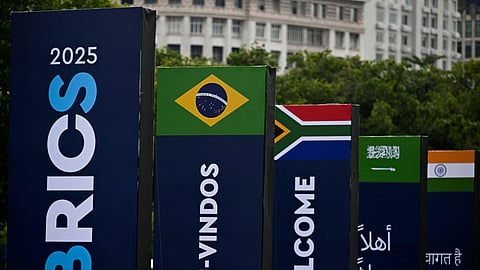

NEW DELHI: India’s trade with the key BRICS bloc—Brazil, Russia, India, China, and South Africa—has expanded significantly over the past four years, reaching a total volume of US$ 399 billion in 2024.
This reflects a robust compound annual growth rate (CAGR) of nearly 20% between 2020 and 2024. However, the sharp rise in trade has also resulted in a widening imbalance. While India’s imports from BRICS countries touched US$ 304 billion, its exports stood at a relatively modest US$ 95 billion, leaving a trade deficit of US$ 209 billion.
This growing economic disparity is expected to be one of the key themes at the 17th BRICS Summit, scheduled to take place on July 6–7 Rio de Janeiro, Brazil. Prime Minister Narendra Modi will attend the summit.
India’s deepening trade ties with BRICS are being shaped primarily by energy security and access to critical raw materials. Among the member nations, India’s trade with Russia has seen the sharpest growth, with a CAGR of 81% from 2020 to 2024.
This surge has been driven by large-scale oil imports amid ongoing Western sanctions on Moscow. Russia, along with Saudi Arabia and the United Arab Emirates, now accounts for 59% of India’s total oil import basket, underscoring the country’s growing reliance on energy imports from non-Western sources. Fertiliser imports from Russia have also increased fivefold in the same period.
India’s trade dynamics with China, the largest BRICS economy, have also shifted. While China remains India’s top source of imports within the bloc, its share in India’s total imports has declined from 16.6% in 2020 to 13.7% in 2024, suggesting a gradual diversification of India’s import partners worldwide. Nonetheless, the overall import profile from BRICS remains skewed toward energy, fertilisers, telecom equipment, and electrical machinery, limiting the scope for trade balance correction in the near term.
The data compiled by Rubix Data Sciences show that on the export front, India’s performance has been steady but slower. Non-oil exports to BRICS countries grew at a CAGR of 8%, while oil-related commodity exports such as refined petroleum products rose at a much higher CAGR of 62%. Pharmaceuticals have emerged as a strong export segment, particularly to South Africa, which now sources 45% of its pharmaceutical imports from India. Other key export items include telecom equipment and auto components.
Despite the sharp increase in trade volume, the structure of India’s trade with BRICS remains asymmetrical, with high dependency on energy and raw material imports and moderate growth in value-added exports. This imbalance raises concerns amid geopolitical shifts.